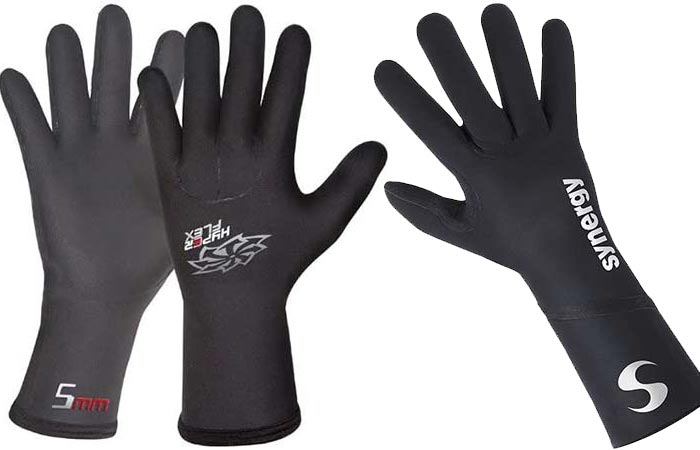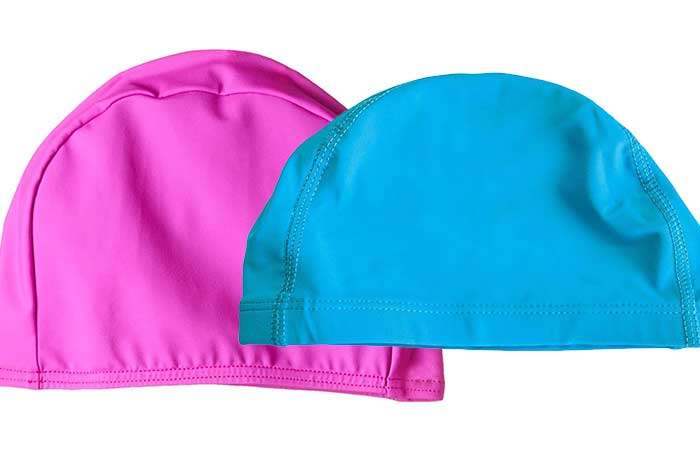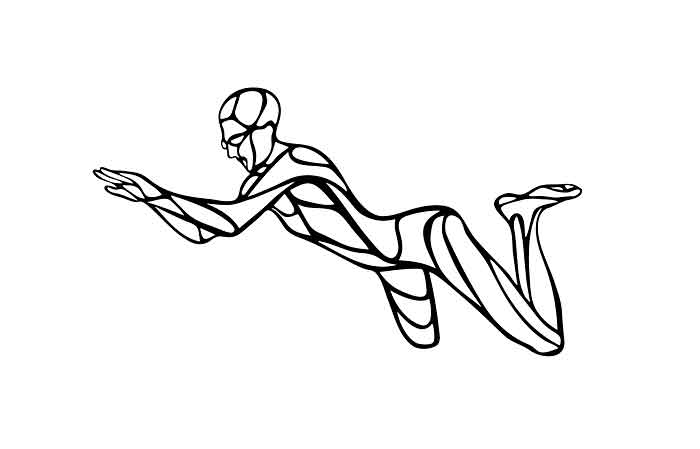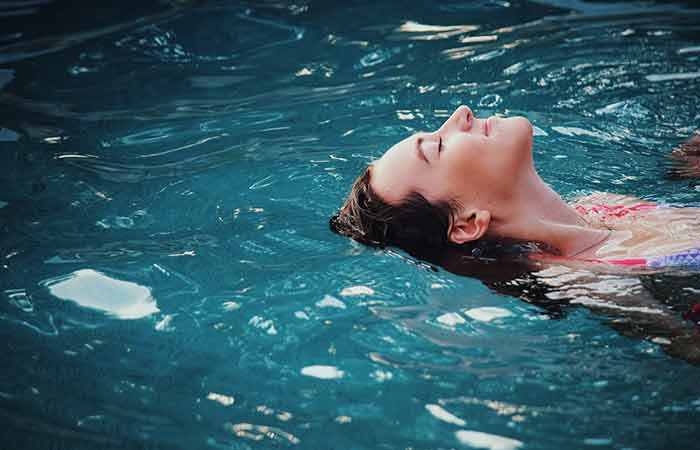How Do Swim Diapers Work? Do they Hold Pee & Poop?
Swim diapers are an essential piece of gear for little ones during any water activities. They allow babies and toddlers to enjoy the pool or beach without risky leaks.
Read on to learn how they work, the types, benefits, proper usage, maintenance tips, alternative, comparison to regular diapers, alternatives, and more.
What are Swim Diapers and How do they Work?
Swim diapers are specialized diapers designed to be worn by infants and toddlers during water activities. They are specifically crafted to function effectively in aquatic environments. Their unique construction and materials ensure a comfortable and hygienic swimming experience for your child and others in the pool.
Swim diapers are engineered to be non-absorbent, differentiating them from traditional diapers. Instead of soaking up liquids, they are designed to allow water to pass through while containing solid waste. This ability prevents fecal matter from dispersing into the water, which would rather contaminate the pool, beach, or other swimming areas.
Unlike regular diapers, which are meant to soak moisture, swim diapers are crafted from materials that resist water absorption.
This ensures they don’t become heavy or bulky when submerged, allowing little swimmers to move freely in the water without feeling weighed down with a soaked-up swim diaper.
The construction of swim diapers typically involves water-resistant outer layers, often made of polyester or nylon, which effectively repel water.
This outer layer serves as the first line of defense, keeping pool water from entering the diaper while the child swims. Inside, swim diapers have mesh-like materials that facilitate the passage of liquids, such as urine, through the diaper.
Although swim diapers are not absorbent, they are designed to contain solid waste effectively. Elasticized waistbands and leg openings create a snug fit, preventing accidental leaks. This containment is crucial for maintaining water hygiene and preventing fecal matter from entering the water, which could lead to potential health hazards and pool closures.
Do Swim Diapers Hold Pee & Poop?
No, swim diapers do not hold pee but can hold poop. Swim diapers allow liquids like urine to pass through while containing solid waste.
The main purpose of swim diapers is to prevent solid waste, such as fecal matter, from being released into the water, thereby maintaining water hygiene during water activities.
These specialized diapers are made from non-absorbent materials, typically having a water-resistant outer layer that repels water. This design ensures that swim diapers do not become heavy or bloated when exposed to water, allowing infants and toddlers to move comfortably in the pool or any aquatic setting.
While swimming diapers effectively contain solid waste, they have limitations regarding urine. As urine is mainly composed of liquid, it can pass through the swim diaper without being absorbed. Therefore, swim diapers are only partially leak-proof when it comes to urine.
Parents and caregivers need to be aware of this and frequently check and make changes to ensure the child’s comfort and hygiene during the swimming session.
Types of Swim Diapers: Reusable vs. Disposable
There are two main types of swim diapers available in the market: disposable swim diapers and reusable swim diapers, which primarily contain solid waste and prevent it from getting into the water.
Disposable Swim Diapers:
Disposable swim diapers are convenient and easy to use. They are made from lightweight and water-resistant materials, ensuring they do not become heavy or saggy when wet.
These diapers are designed for single use, making them a practical choice for short water activities or travel purposes. After use, you can simply dispose of them even if your child hasn’t pooped in them, reducing the hustle of carrying spoiled items back home.
Disposable swim diapers come in various sizes to accommodate infants and toddlers of different ages and weights.

Reusable Swim Diapers
On the other hand, reusable swim diapers are a more eco-friendly option. They are typically made from durable, quick-drying fabrics with elasticized waistbands and leg openings for a secure fit.
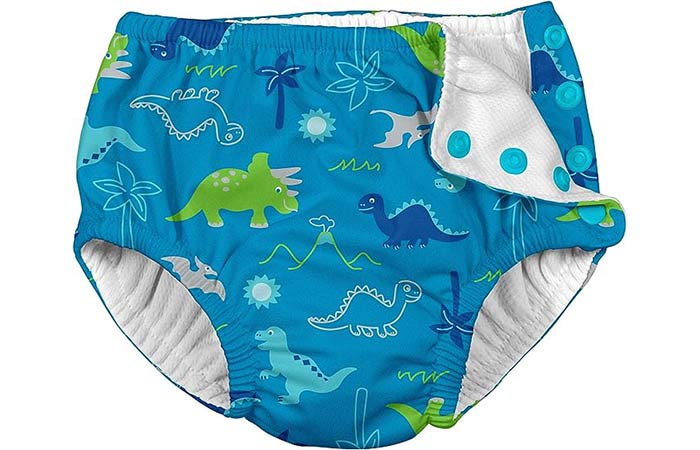
Unlike their disposable counterparts, you can reuse these swim diapers multiple times. This makes them a cost-effective choice for families who frequently engage in water activities or prefer a sustainable approach.
They feature adjustable hook-and-loop closures, allowing for easy size adjustments as your child grows.
| Reusable Swim Diapers | Disposable Swim Diapers | |
| Pros | Environmentally friendly and sustainable Cost-effective over the long term Can be used multiple times Often offer adjustable sizing May have a more comfortable and cloth-like feel | Convenient and easy to use Ideal for a one-time use during swim outings Hassle-free disposal after use Available in various sizes for easy fitting Generally, have a snug fit and secure seal |
| Cons | Require cleaning after each use May not absorb as much liquid as disposable counterparts Requires more maintenance and care Not as readily available in all sizes and designs | Can be more expensive over time compared to reusable options Not as environmentally friendly due to single-use nature May have limited adjustability for sizing May not offer the same cloth-like comfort as reusable options |
Benefits of Swim Diapers
Swim diapers provide:
- Containment – Trap fecal accidents while swimming to avoid pool contamination.
- Health – Reduce the spread of germs that make swimmers sick, especially in public pools.
- Enjoyment – Allow babies and toddlers to safely enjoy swimming and water play.
- Comfort – More comfortable wet than regular diapers which get heavy.
- Affordability – Reusable options cost less long term than constantly buying disposables.
Choosing a Swim Diaper
Consider the following when selecting a swim diaper:
When choosing a swim diaper, key factors include type (reusable vs. disposable), size, styles, special features, materials, changing needs, etc. Read on for details.
Swim Diaper Size Guide
Proper sizing ensures swim diapers contain messes without leaking or sagging.
Disposable swim diapers come in set sizes similar to standard diaper sizes – most brands sell nappies in the following sizes:
- 2-3 (to fit babies who weigh approx. 6 – 17lbs)
- 3-4 (to fit babies who weigh approx. 15 – 33lbs)
- 5-6 (to fit babies who weigh approx. 26 – 39lbs)
These numbers refer to the diaper size and not the age of the child, so choose a size similar to your child’s regular diapers. Choose a snug but comfortable fit.
Some disposable swim diapers designed for smaller children have adjustable tabs for a more secure fit.
Reusable swim diapers are sized by children’s ages – 0-3 months, 3-6 months, 6-12 months and so on. Your child’s age should be used as a guide for buying a reusable swim diaper but it’s important to also measure your child’s waist and thighs for the best fit.
Swim diapers look like regular swimming shorts and should fit snuggly at the waist and thighs and be tight enough without leaving a red mark.
| Age Range | Waist Circumference | Thigh Circumference |
| X Small -Newborn | 12.2 – 14.2 in | 5.9 – 7.9 in |
| Small – 0-3 Months | 13.4 – 16.1 in | 6.9 – 7.9 in |
| Medium – 3-6 Months | 14.6 – 17.3 in | 7.5 – 9.5 in |
| Large – 6-12 Months | 15.7 – 18.5 in | 7.8 – 10.2 in |
| X Large – 1-2 Years | 16.5 – 19.7 in | 8.7 – 12.2 in |
| XX Large – 2-3 Years | 17.3 – 20.5 in | 10.2 – 13 in |
| 3-4 Years | 18 – 21 in | 10.5 – 14 in |
| 4-5 Years | 22 – 24 in | 11.5 – 15 in |
Waist : Measure the circumference of the fullest part of the waist
Thigh: Measure the circumference of the fullest part of the thigh
It’s ideal to try on multiple sizes with your child to confirm fit, especially with different brands.
Consult sizing charts and select based on baby’s weight. But trying on is the best way to get that ideal snug fit.
Styles and Special Features
Swim diaper styles include:
- Full diapers with complete front and back coverage
- Briefs with less material for mobility
Closures secure the diaper:
- Velcro for an adjustable fit
- Snaps for easy on and off
- Pull on with elastic waist
Special features include:
- Inner liners or layers for extra leakage protection
- Double leg gaskets to seal legs
- Bright colors and fun prints for visibility and style
Combine desired features with proper sizing for the best diaper.
Swim Diaper Materials
The diaper lining should:
- Absorb minimal water – Unlike regular diapers, swim diapers shouldn’t swell.
- Contain solid waste – Inner mesh or leg gaskets trap messes.
Common materials include:
- Nylon – Durable and dries quickly
- Polyester – Soft but absorbs some water
- Plastic or PUL – Waterproof outer layer
Consider the environmental impact of disposable materials. Reusable cloth has less waste.
Changing Needs Over Time
As babies grow, diaper needs evolve:
- Start with the newborn size and increase to larger sizes
- Around age 2-3, switch to reusable swim underwear with absorbent inserts
- Remove inserts gradually during potty training
Consult your pediatrician if introducing swimming before 1 month old. Monitor and change diapers frequently. Consider training pants options when ready.
Swimming Diapers Use Tips
Here are some tips on how to use swimming diapers well:
- Proper fitting and sizing: Choose the appropriate size based on your child’s weight and age, following the manufacturer’s guidelines. A snug but comfortable fit around the waist and legs will help prevent leaks and ensure the diaper stays securely in place during the swim session.
- Check your child’s stomach situation: Disposable swim diapers may not effectively prevent feces from entering the pool, particularly with loose stools. If your child has diarrhea, it’s best to skip the swimming session until they are fully recovered to maintain water hygiene and safety.
- Putting on and removing swim diapers: Lay the child on their back and slide the swim diaper under their bottom. Then secure the diaper by fastening the tabs or snaps, ensuring a snug fit around the waist and legs. When removing the swim diaper, carefully unfasten the tabs or snaps and gently slide it off to prevent any potential messes.
- Swim diaper care and maintenance: After use, rinse the swim diaper with fresh water to remove chlorine, salt water, or any sand particles. If you’re using a reusable swim diaper, follow the manufacturer’s instructions for washing and care. Proper maintenance ensures the durability of the diaper and keeps it fresh and ready for the next swim.
- Frequent checks and changes: Regularly check the swim diaper for any signs of droppings, especially after a bowel movement. Changing the diaper promptly is crucial if it becomes filled with solid waste or heavily saturated with urine. Frequent checks and changes help maintain a clean and hygienic swimming environment.
- Consider a swim diaper cover: For added protection, especially with reusable swim diapers, consider using a swim diaper cover or rash guard. These additional layers can provide an extra barrier against any potential leaks and keep the diaper snug and secure.
- Pack extras: Always pack extra swim diapers when heading to the pool or beach. Accidents can happen, and having backups on hand ensures that you can quickly replace a damaged diaper without disrupting the fun.
- Always consult a pediatrician before starting swim lessons or other water activities with infants.
Do Swim Diapers go over Regular Diapers?
No, regular disposable diapers should not be worn underneath swim diapers. Using both together is not recommended because;
The absorbent material in regular diapers works against the purpose of swim diapers, which is to contain solid waste without retaining water.
The added bulk of a regular diaper under a swim diaper can negatively impact fit and mobility. Once saturated, a regular diaper also weighs down the swim diaper, causing it to sag or fall off.
Most critically, regular diapers can still leak fecal contaminants even when covered by a swim diaper, posing health risks.
For safety and proper functionality, it is best to only wear your baby’s designated swim diaper without any other diaper layers when swimming.
Swim Diapers vs. Regular Diapers
Comparing swim diapers to regular diapers reveals distinct differences:
| Feature | Swim Diapers | Regular Diapers |
| Design | Designed to prevent solid waste leaks in water | Designed for all-day absorption |
| Absorption | Minimal water absorption | High water absorption |
| Fit | Emphasizes a secure fit to prevent leaks | Designed for comfort and everyday movement |
Are there Adult Swim Diapers?
Adult swimming diapers are available and offer a practical solution for individuals who may require extra support and comfort during water activities.
Just like swim diapers designed for infants and toddlers, adult swim diapers are specially crafted to be worn in the water, providing a discreet and reliable option for adults with various needs.
These swim diapers are typically made with materials that are water-resistant and quick-drying, ensuring comfort and convenience during aquatic activities. They come in various styles, including pull-on swim diapers and those with adjustable closures for a secure fit.
Adult swim diapers are particularly useful in specific situations. They are commonly used by individuals dealing with incontinence or other medical conditions that may necessitate extra protection while in the water.
These diapers offer peace of mind and confidence, allowing adults to enjoy swimming, water aerobics, or other water-related activities without worrying about any potential embarrassment.
What to do if you Don’t have Swim Diapers? (Alternatives)
If you find yourself in a situation where you don’t have swim diapers on hand, don’t worry; there are still practical measures you can take to ensure a pleasant and hygienic water experience.
Improvise with regular diapers:
While regular diapers are not designed for swimming, they can still provide some level of protection. Use a regular diaper as a temporary solution, but be aware that it will become waterlogged and may not effectively prevent feces from leaking into the water.

Take precautions without swim diapers:
If you don’t have access to swim diapers, consider limiting water play to shallow areas where your child can easily be taken out for diaper changes. Frequent checks and quick diaper changes are essential to prevent embarrassment and maintain water cleanliness.
Rental or borrowing options:
Check with the facility you are visiting if they offer swim diapers for rent or provide temporary ones for purchase. Some swimming pools or water parks may have this option available to ensure that all guests can safely participate in water activities.
Be mindful of timing:
Plan your water activities around your child’s regular bathroom schedule to minimize the chances of needing a diaper change during swimming. Encouraging your child to use the bathroom before entering the water can also help reduce the need for immediate diaper changes.
Consider swim pants or swim shorts:
Although not as effective as swim diapers, swim pants or swim shorts can offer some level of containment. These products are designed for older children who may not need a diaper but could benefit from added protection during water play.
Swim Diaper vs. Swim Pants
Swim diapers and swim pants are both designed to provide containment during water activities, but they have key differences in their construction and intended use.
Swim diapers, as we discussed earlier, are non-absorbent and primarily focus on containing solid waste while allowing liquids to pass through. They are suitable for infants and toddlers who are not yet potty-trained and need a diapering solution in the water.
Swim pants, on the other hand, are intended for older children who may no longer need diapers but still require some protection or are in the transition stage of potty training. Unlike swim diapers, swim pants have a more underwear-like design with absorbent layers that can hold small amounts of urine.
The key difference between swim diapers and swim pants lies in their absorbency and target age group. Swim diapers are for infants and toddlers, focusing on containing solid waste, while swim pants are for older children, providing some level of absorbency for small amounts of urine.
In conclusion, swim diapers are a must-have for any water-loving family, as they provide an effective barrier against solid waste and contribute to the overall cleanliness of swimming environments.
Their unique design ensures a snug and comfortable fit, allowing infants and toddlers to enjoy their water adventures freely. Although they do not hold pee like regular diapers, their ability to contain solid waste is their primary function, making them indispensable during water activities.


